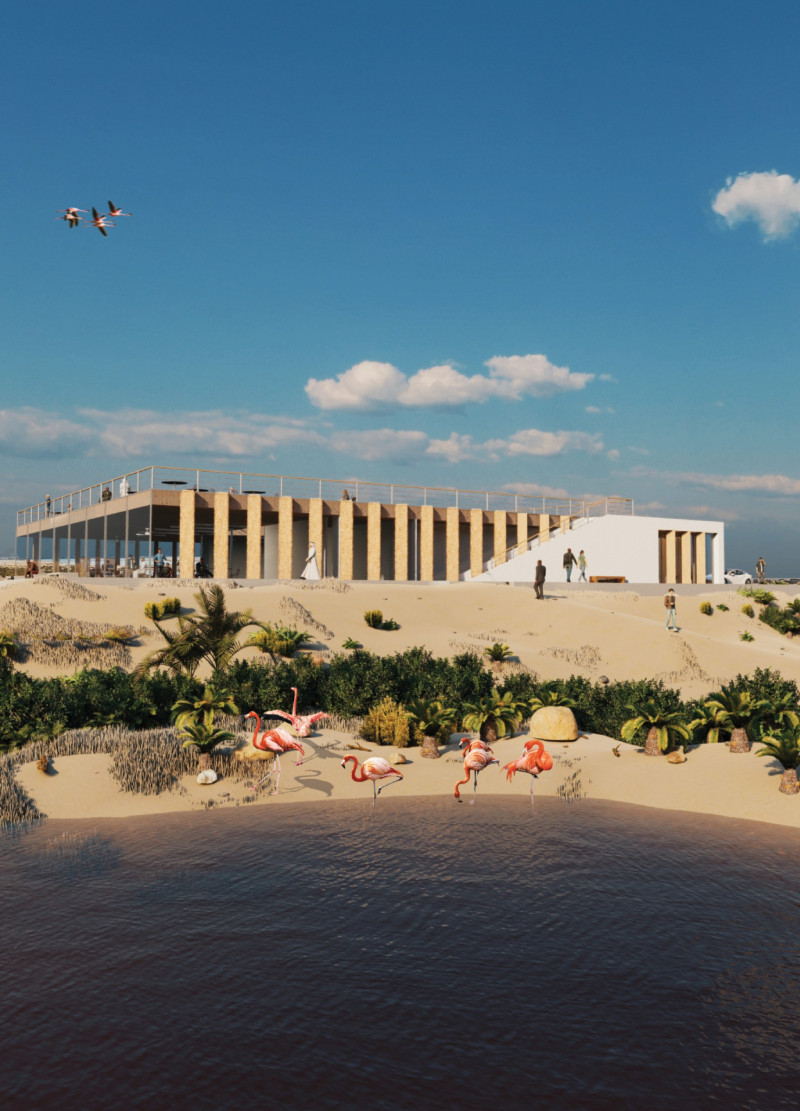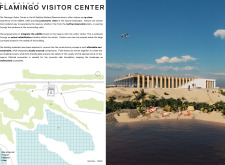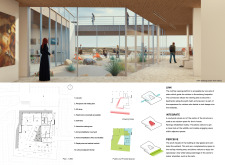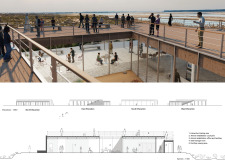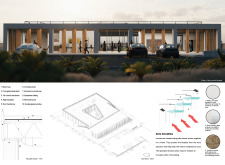5 key facts about this project
The Flamingo Visitor Center is located in the Al Wathba Wetland Reserve, designed to foster a deeper connection between visitors and the local wildlife. The center combines educational opportunities with interactive experiences, allowing guests to engage meaningfully with the rich ecosystem of the wetland. The design focuses on integrating the building with its surrounding environment, creating a space that enhances both learning and appreciation for nature.
Rooftop Observation Deck
A key feature is the rooftop observation deck, which provides elevated views over the wetlands. This area invites guests to take in the expansive landscape and observe various species within their natural habitat. The elevated perspective broadens the visitor experience, showcasing the beauty of the wetlands and enriching the understanding of the local ecosystem.
Animal Rehabilitation Initiative
The visitor center includes an animal rehabilitation initiative that offers a dedicated courtyard for observing wildlife in recovery. This aspect emphasizes the center’s role in conservation efforts. Visitors can witness firsthand the processes involved in rehabilitating animals and learn how these efforts contribute to preserving local biodiversity.
Sustainable Design Elements
Sustainability is central to the material choices evident in the visitor center. The concrete slab foundation minimizes excavation and helps maintain the natural landscape. Woven palm leaves serve as sun shading louvers, which reduce solar heat and create a comfortable indoor environment. Bird-friendly glass is used throughout the facilities to protect local bird species, aligning the center's design with its environmental goals.
Interior and Exterior Interaction
The layout promotes a strong connection between indoor and outdoor spaces. The fully glazed south facade floods the interior with natural light while providing unobstructed views of the wetlands. This design encourages visitors to move through the space and engage with both exhibits and the natural surroundings. The rooflines of the center reflect the forms found in the landscape, integrating the structure visually and emphasizing the continuity of architecture and nature.
The building culminates in a design that echoes the contours of the region, reinforcing the dialogue between human activity and the natural world. Each element serves a purpose, contributing to an inviting experience for those who wish to learn about and observe the rich wildlife of the Al Wathba Wetland Reserve.


